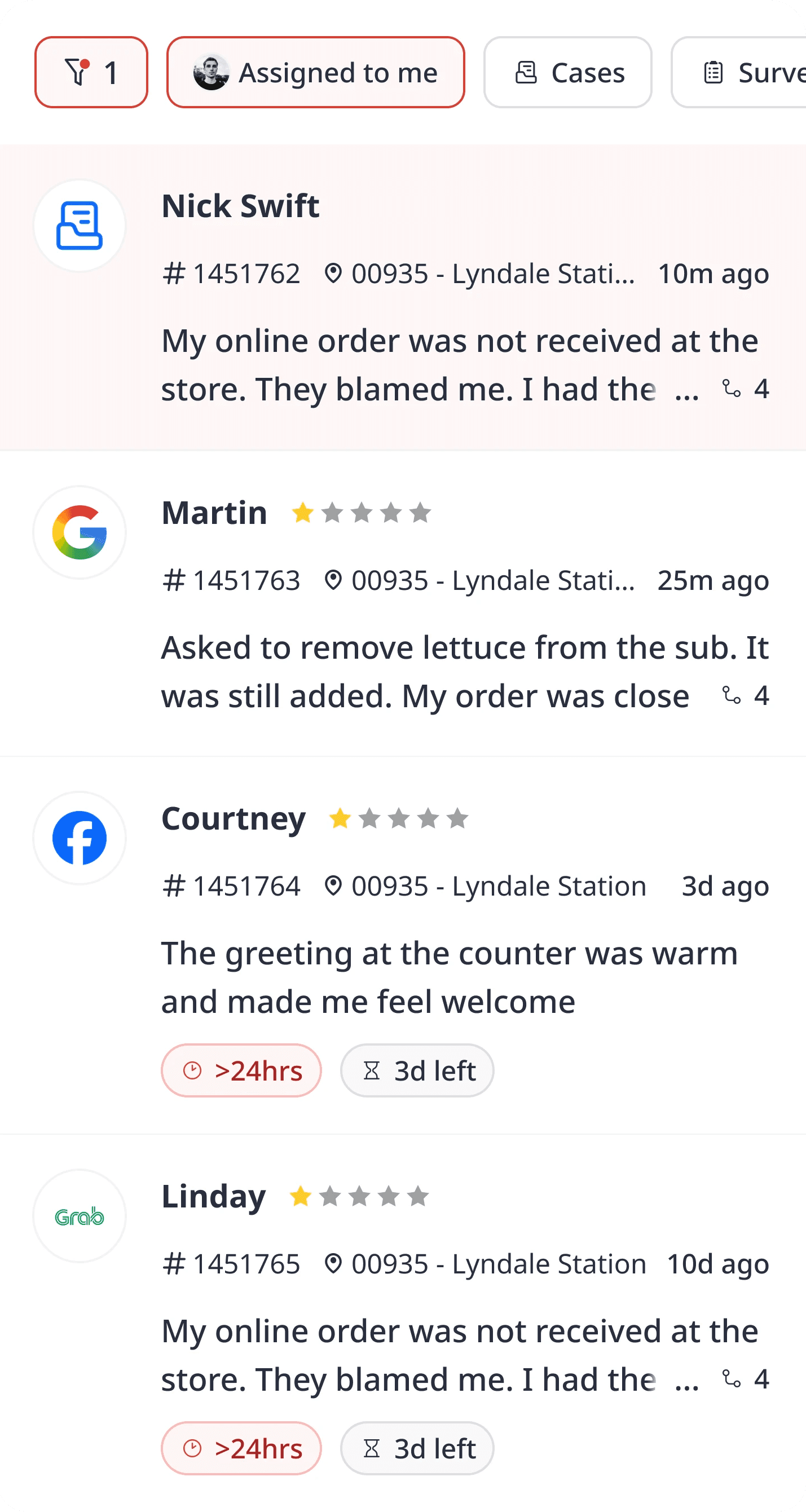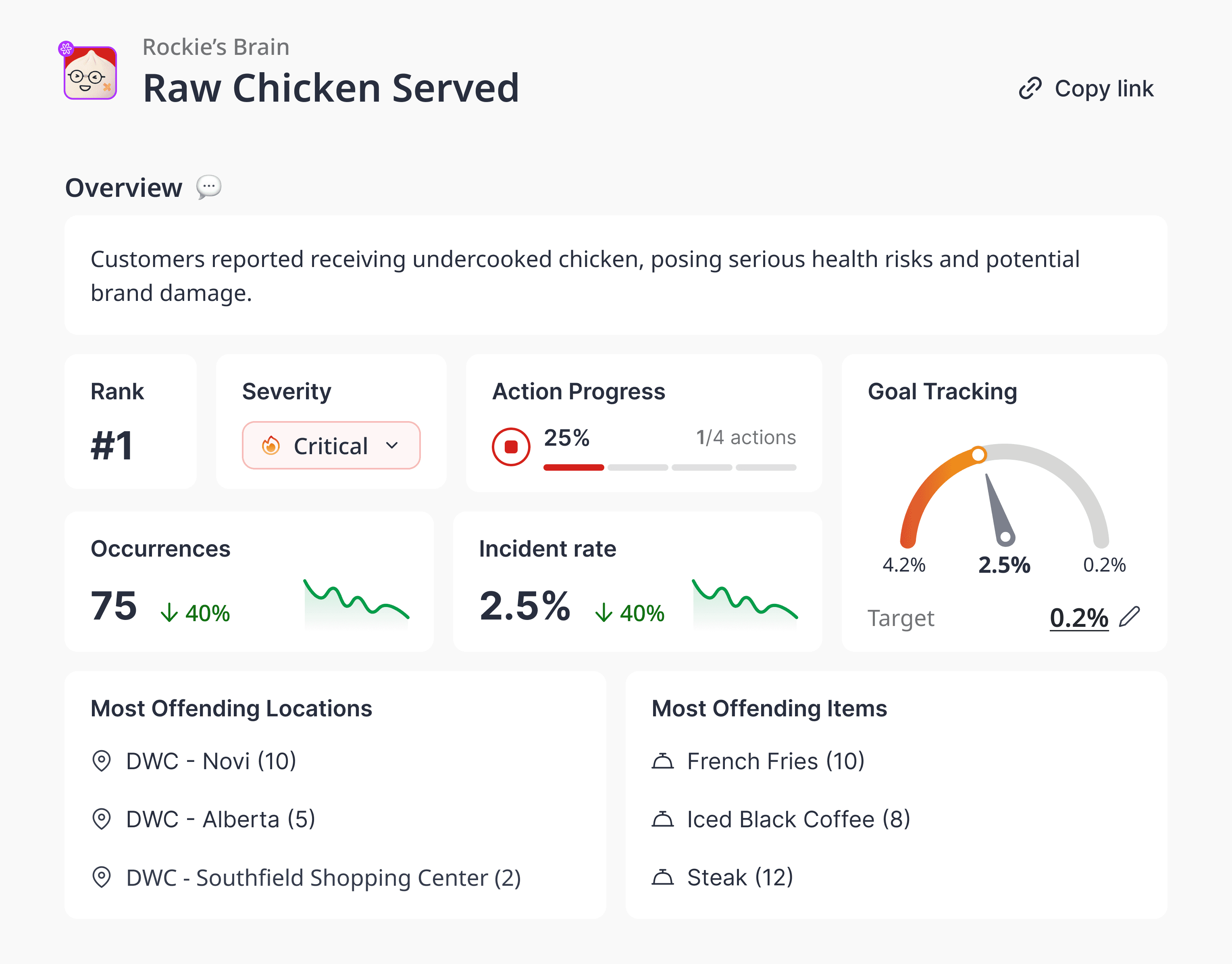
Jun 5, 2025
Amanda Jacob
Location-Level Reputation Is Your Growth Engine—Here’s the Proof
Contents
For multi-location brands, reputation isn’t one story—it’s hundreds.
Each store has its own customers, its own service moments, and—most importantly—its own online reviews. And while brand marketing may live at HQ, growth lives in your locations. That’s why location-level reputation isn’t just a visibility factor—it’s a revenue engine.
Let’s break down how local reviews impact discovery, conversion, and loyalty—and why QSRs need to take reputation management off the back burner.
Why Local Reviews Matter More Than You Think
When customers search for food nearby, they don’t see your national campaign. They see:
A Google Business Profile
A star rating
A few recent reviews
And it’s not just visibility—it’s conversion. According to BrightLocal, 98% of consumers read online reviews for local businesses, and more than 50% won’t consider businesses rated under 4.0 stars.
Here’s where it gets real:
A one-star rating increase on Google correlates with a 5–9% increase in revenue.
(Source: Harvard Business Review)
For a 100-location QSR, that difference adds up fast.
How Location-Level Ratings Impact Local SEO
Google’s local ranking algorithm heavily weights:
Relevance
Distance
Prominence (aka reputation)
That third category—Prominence—is directly tied to your:
Review count
Review score
Review recency
That means:
A 4.7-star store with 500 reviews will rank higher than a 4.1-star store with 30—even if they’re the same brand.
Locations with more reviews appear in the Map Pack more often, increasing visibility for “near me” searches.
Study: According to Whitespark’s Local Search Ranking Factors (2023), Google reviews (quality, quantity, and recency) are the #1 ranking factor for local map results.
Case Study: How Guzman y Gomez Maintains the Highest Reputation in SEA
Take Guzman y Gomez (GYG)—one of the top-rated QSRs in Southeast Asia.
Over 100 reviews per location, up from just 23 a year ago
Maintains an average rating above 4.8 across all stores
Achieved 98% customer satisfaction scores
Saved 480+ hours by automating review response and routing with Momos
By managing reputation at the store level—not just the brand level—GYG ranks higher in Google Maps, appears more often in search results, and wins customer trust before the first order is placed.
The result? Higher foot traffic, better conversions, and increased operational confidence across the chain.
The Hidden Revenue Leaks in Low-Rated Stores
Here’s the part most operators miss:
Low-rated stores are silent killers.
They:
Drive down average brand perception
Get buried in search results
Erode loyalty from customers who do visit
Require costly service recovery efforts after the damage is done
Even if the rest of your locations are performing, a few under 4.0 stars can tank your average—and your growth.
A review gap of just 0.3 stars between locations can impact regional sales performance by up to 12%, according to internal analysis from multi-location brands using Momos.
How to Strengthen Local Reputation Across All Locations
✅ Centralize and monitor review data
Use tools that aggregate reviews across platforms and locations, but break insights down at the store level.
✅ Automate the basics
Auto-respond to 4–5 star reviews with personalized messages. Set alerts for negative trends.
✅ Benchmark performance
Track which locations are improving, slipping, or outperforming. Use this for ops coaching and resource allocation.
✅ Close the loop
Don’t just reply. Recover customers. Fix issues. Use feedback as fuel.
Momos users see an average 30% lift in review volume within 90 days after implementing proactive engagement workflows.
Key Takeaways
Reputation is local. Every store is its own SEO engine.
Ratings affect rankings. And rankings affect revenue.
Managing reviews isn’t optional. It’s operational.
Your Best Store Shouldn’t Carry the Whole Brand
If 10% of your stores are underperforming on Google Reviews, it’s not just a brand issue—it’s a growth cap.
With Momos, QSRs can manage, monitor, and optimize reputation at every location—automatically. We turn review data into actions that help operators fix issues, boost ratings, and drive more revenue.






